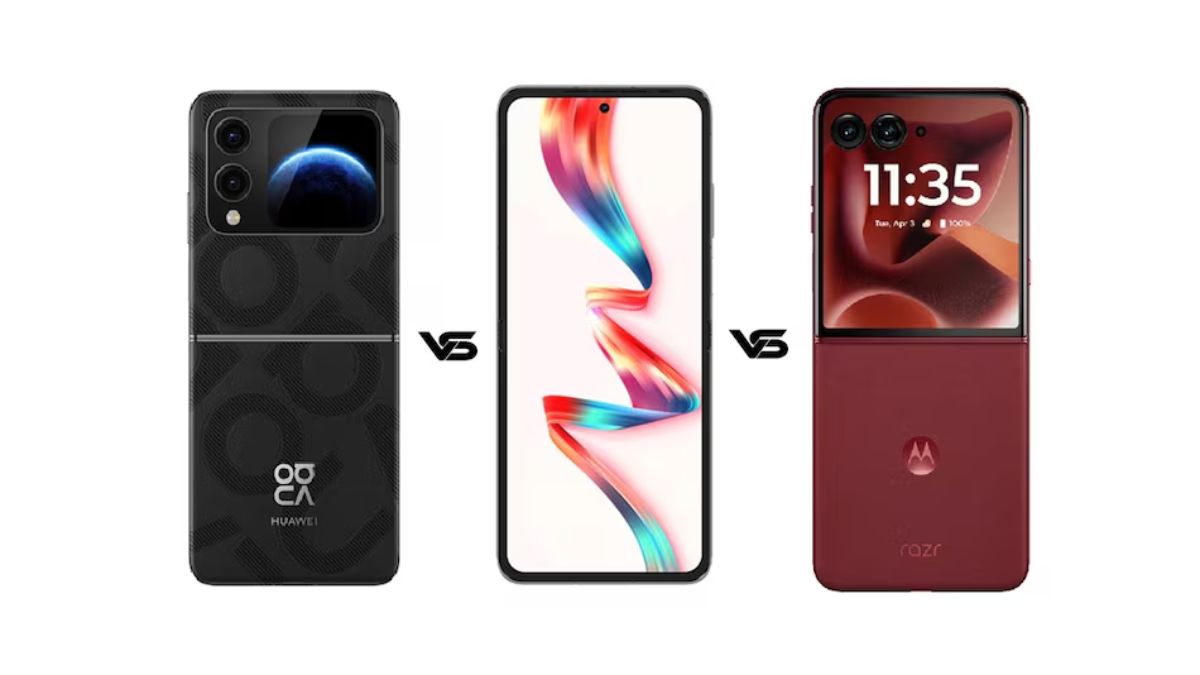Huawei Nova Flip S Enters Crowded Foldable Market, Squares Off Against Motorola Razr 60 Ultra and Infinix Zero Flip

New Huawei Flip Phone Boasts Kirin 8000 Processor and HarmonyOS 5.1, Challenging Established Players on Price and Features
SHENZHEN, CHINA – Huawei has officially introduced its latest foldable smartphone, the Huawei Nova Flip S, into the bustling and increasingly competitive flip phone segment. The launch immediately sparks comparisons with established contenders like the Motorola Razr 60 Ultra and the Infinix Zero Flip, as consumers seek the best blend of innovation, performance, and value in the clamshell foldable form factor. The Nova Flip S arrives with a distinct set of specifications, including Huawei’s proprietary Kirin 8000 processor and HarmonyOS 5.1, aiming to carve out its niche in a market eager for foldable technology.
This detailed comparison delves into the key aspects – price, display, processor, RAM/storage, operating system, camera setup, and battery life – to provide a comprehensive overview of how the Huawei Nova Flip S stacks up against its rivals.
Price and Storage: A Competitive Landscape
Pricing is often a crucial differentiator in the premium smartphone market, and the new Huawei Nova Flip S offers compelling options. Its 256GB storage variant is priced at CNY 3,388 (approximately Rs. 41,900), while a larger 512GB option is available for CNY 3,688 (approximately Rs. 45,600).
In comparison, the Infinix Zero Flip positions itself as a strong value proposition, with its 8GB RAM + 512GB storage configuration retailing for Rs. 39,999. On the higher end of the spectrum, the Motorola Razr 60 Ultra, with its premium specifications, carries a price tag of Rs. 79,999 for the 16GB RAM + 512GB storage variant, positioning it firmly in the flagship category.
Dual Displays: Design and Visual Experience
All three devices embrace the foldable clamshell design, featuring a large internal foldable display and a smaller external cover display for quick interactions.
The Huawei Nova Flip S boasts a 6.94-inch Full HD+ OLED foldable main display, offering a resolution of 2690×1136 pixels and a smooth 120Hz refresh rate. Its secondary cover display is a 2.14-inch OLED panel with a resolution of 480×480 pixels, suitable for notifications and widgets.
The Infinix Zero Flip comes with a 6.9-inch LTPO AMOLED main display, also featuring a 120Hz refresh rate. Its outer AMOLED display measures 3.64 inches and also supports a 120Hz refresh rate, providing a more expansive and fluid experience for the external screen.
Leading the pack in display technology is the Motorola Razr 60 Ultra. It sports a larger 7-inch 1.5K pOLED LTPO foldable primary display with an impressive resolution of 1224×2992 pixels, a blazing-fast 165Hz refresh rate, and a peak brightness of 4,000 nits. Its 4-inch pOLED LTPO cover display also stands out with a resolution of 1272×1080 pixels and a bright 3,000 nits peak brightness, making it highly functional even in direct sunlight.
Processor Power: The Heart of Performance
The choice of processor is a critical factor in overall smartphone performance. The Huawei Nova Flip S is powered by Huawei’s in-house Kirin 8000 chipset, indicating the company’s continued investment in its own silicon.
The Infinix Zero Flip utilizes the MediaTek Dimensity 8200 processor, a capable chip known for balancing performance and power efficiency.
The Motorola Razr 60 Ultra, aimed at the premium segment, is equipped with the octa-core Qualcomm Snapdragon 8 Elite chipset, a top-tier processor that promises unparalleled speed and graphical prowess for demanding applications and gaming.
RAM and Storage: Multitasking and Data Capacity
Storage and RAM configurations are essential for user experience. The Huawei Nova Flip S offers 8GB RAM paired with choices of 256GB and 512GB of inbuilt storage.
The Infinix Zero Flip comes in a single configuration with 8GB RAM and 512GB of inbuilt storage.
The Motorola Razr 60 Ultra provides a generous 16GB RAM alongside 512GB of inbuilt storage, ensuring ample headroom for multitasking and storing large files.
Operating System: User Interface and Ecosystem
The software experience differs significantly across these devices. The Huawei Nova Flip S runs on HarmonyOS 5.1, Huawei’s proprietary operating system, offering a unique ecosystem and user interface.
The Infinix Zero Flip operates on XOS 14.5, which is based on Android 14, providing a familiar Android experience with Infinix’s customisations.
The Motorola Razr 60 Ultra is powered by Android 15, featuring Motorola’s clean Hello UI, known for its near-stock Android experience with helpful enhancements.
Camera Setup: Capturing Moments
Camera capabilities are often a deciding factor for many users. The Huawei Nova Flip S features a dual-rear camera setup with a 50-megapixel primary sensor and an 8-megapixel ultra-wide-angle lens. For selfies and video calls, it includes a 3-megapixel front camera.
The Infinix Zero Flip sports a more robust camera system, with a 50-megapixel primary camera with OIS support and a 40-megapixel ultrawide camera. Its front-facing camera is a high-resolution 50-megapixel sensor.
The Motorola Razr 60 Ultra matches the Infinix in front camera resolution, offering a 50-megapixel selfie shooter. On the rear, it boasts a dual 50-megapixel setup, including a primary sensor and a 50-megapixel ultrawide camera.
Battery Backup and Charging: Powering Through the Day
Battery life and charging speed are crucial for a seamless smartphone experience. The Huawei Nova Flip S is equipped with a 4,400mAh battery supporting 66W fast charging.
The Infinix Zero Flip comes with a slightly larger 4,720mAh battery and supports even faster 70W charging.
The Motorola Razr 60 Ultra houses a 4,700mAh battery, with support for 68W fast charging.
Conclusion
Each of these flip smartphones brings its unique strengths to the market. The Huawei Nova Flip S offers a compelling package with its Kirin processor and HarmonyOS, positioned competitively in terms of price. The Infinix Zero Flip stands out with its aggressive pricing and strong camera specifications. Meanwhile, the Motorola Razr 60 Ultra champions top-tier performance, a superior display, and a refined Android experience, albeit at a higher price point. Consumers now have an even wider array of choices when selecting their next foldable device, catering to varying budgets and feature priorities.
